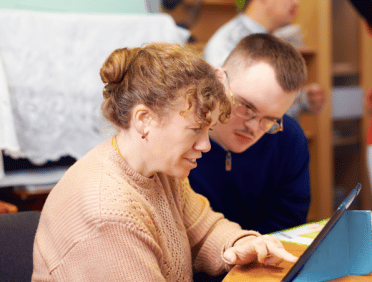Within the world of safeguarding there are many things which are considered to be highly upsetting in nature. One such event is female genital mutilation, or FGM.
As a practice, this is not only a crime, but also a mentally, physically and emotionally scarring act which can have serious repercussions for the women affected by it. Understanding what it is, who is at risk, and what your individual safeguarding responsibilities are is important for getting the proper training.
What is Female Genital Mutilation (FGM)?
Female Genital Mutilation (FGM) is a procedure whereby the genital organs of a female are deliberately injured, cut or otherwise changed in some fashion. There is absolutely no medical reason to do so in any of these situations.
As an action, this is frequently violent, traumatic and harmful to the victim. It is a practice which causes severe pain in the short term, but in the long term, it can create complicated issues like lasting pain and infections, difficulties in childbirth, mental health problems, and even in some situations.
FGM has a complicated history which is rooted in ethnic populations across Africa, Asia and the Middle East. Parallels have been drawn between FGM and circumcision for males. It is important to note that there is no justification within any major religion regarding the practice of FGM, and religious leaders from every major coordinated faith have publicly spoken out opposing the practice, citing the obvious psychological and physical harm it creates.
The basic reasoning behind FGM is considered to be a form of control. In societies and cultures where the males assume a dominant role, or among deeply religious individuals in general, FGM is seemingly regarded as a complex way of assuming control over a woman’s sexual and reproductive rights.
The age at which FGM can take place will vary considerably according to the community that practices it. Some areas choose to perform the procedure immediately after birth, whereas others do so in childhood or adolescence. FGM can even take place just before marriage or during a woman‘s first pregnancy.
It is difficult to know with certainty how many girls and women are alive today who have undergone FGM. Some live in secrecy owing to the stigma associated with the act, and others are sadly trapped in the very communities which have mutilated them. However, UNICEF estimates that roughly 200 million girls and women at least have gone through FCM worldwide.
As a procedure, the World Health Organisation has classified FGM into four types of abuse.
The first type is called a “clitoridectomy”. This is a procedure which is the total or partial removal of the clitoris, which is a small, erectile and sensitive part of the female genitalia. In very rare cases, only the prepuce, which is the fold of skin surrounding the clitoris, will be taken.
The second type is called an excision. This is a total or partial removal of both the clitoris and the labor majora. The labia, for anyone who doesn’t know, are the lips which surround the vagina.
The third type of FGM is called an infibulation. This is the narrowing of the vaginal opening, which is done by creating a covering seal. This seal is formed by repositioning and cutting the inner or outer labia, in a procedure which either keeps or removes the clitoris. The exact specifics of the procedure varies between groups.
Finally, the fourth type of FGM is more general, and is given to any and all procedures which are done. These can include cauterising, pricking, piercing and scraping the genital area.
It is important to understand that there is no medical or religious justification for any of these acts. The people who conduct them are typically women (whether commanded by a male figure or otherwise) with no medical knowledge or training. There are no aesthetics or painkillers used in the process – the victim is fully awake and in agony the entire time.
Who Is At Risk?
There are many different indicators that a girl or young woman is at risk is FGM. It’s important to understand all of them, so let’s take a look:
- When a female child is born into a family where any of the females (mothers, cousins or older siblings) have undergone FGM in the past.
- When a child is born into a family where the father comes from a group or community which is known for practicing FGM on a regular basis.
- When the family indicates to outside parties that the elders in the community have a strong level of influence or are directly involved in the raising of female children.
- When a woman or her family believe that FGM is part of their religious or cultural identity.
- When a girl or her family has a limited level of successful integration into the UK community – this distance can often be deliberately maintained by family members to preserve traditions like FGM.
- The girl makes reference to a special “ceremony” or “procedure” which will take place either at a certain age or before a special event in her life which will make her “become a woman”.
- The parents have limited information about FGM and do not understand both the harmful effects of FGM or the legality of the practice in the UK.
- The girl talks about taking a long holiday to either her country or origin or simply a country where the practice is widespread, like parts of Africa and Asia.
- The parents state that they or their relative will be taking the girl out of the country for a long time without giving a specific reason as to why.
- A parent or family member, usually someone outside the core family unit, expresses a concern that FGM is being planned for a girl or young woman.
- There is a marked refusal by the family to engage and cooperate with various professionals across the health and education sector.
- The family is already known to social care services because of past safeguarding issues.
- If a girl requests help from her teacher or another responsible adult, because she has worked out she is either at risk or suspects she is at risk of being exposed to FGM.
- A girl may talk about FGM in conversation, and may tell other children about the practice. In this case, it is important to take the context of the conversation into consideration.
- A girl from a community known to practice FGM is withdrawn from any educational lessons involving personal health, wellbeing and sexual activities.
UK’s FGM Safeguarding Policies
The government launched multi-agency guidelines on FGM in 2016. The guidance makes reference to how to help deal with FGM, by providing strategic guidance on the topic, as well as support and advice for front-line professionals, who may frequently be called on to provide real help to people.
The regulations clearly state that no single agency is capable of meeting the multiple complex needs of someone who is affected by FGM. Therefore, the guidance encourages them to work together to not only protect people, but also to support anyone who has either undergone FGM or been at risk of it.
The legislation sets out to provide information and guidance on how to identify when a girl or young woman can be at risk of FGM, and then to design an appropriate response to protect them from harm.
The guidance is also designed to be able to identify when young women or girls have had FGM done to them, and then to design an appropriate response to help support them. Furthermore, the guidance makes reference to developing measures that will directly help to protect women and help to end the practice of female genital mutilation for good.
These guidelines clearly outline that FGM is considered to be child abuse. As a direct form of violence against girls and women, it is therefore assumed that the act should be treated with and dealt with in the same way as existing safeguarding concerns, using a lot of the existing protection policies and structures.
Signs of Female Genital Mutilation (FGM)
There are several signs and indicators that female genital mutilation has been carried out.
These can include constant pain, ongoing infections, issues passing urine, incontinence, cysts and bleeding, painful experiences with sex, flashbacks and depressive episodes, self-harm, sleeping problems, and difficulty participating directly in PE classes.
Effects of Female Genital Mutilation (FGM)
Unfortunately, there are several problems that FGM can cause, and these come in the form of both short-term and long-term implications for health and well-being.
Short-term implications include severe pain and shock, wound infections, issues with urine retention, haemorrhaging, genital swelling, injury to the surrounding area, and death.
Long-term implications can include general scarring, genital cysts and keloid scar formations, difficulties in passing urine and recurrent urinary tract infections, a possible increased risk of blood infections like HIV and hepatitis B, impaired sexual function, a lack of pleasurable sensation or pain during sex, psychological issues like post-traumatic stress disorder, anxiety, flashbacks and depression, and difficulties with menstruation, complications in pregnancy, the increased risk of stillbirth or death of the child, and other considerable physiological, social and psychosexual consequences.
Vulnerabilities
Women and young children who are exposed to FGM may be an increased risk of being controlled, abused, or having their freedom is repressed. As FGM is considered a form of abuse, any victim who undergoes the procedures will also be at the same increased risk of other abuse related long-term problems like mental health issues.
Cultural Significance of FGM
It is widely understood that FGM is a complex issue. The families and individuals who support this course of action often give varying motivations and justification for doing so. However, it is important to acknowledge that first and foremost, FGM is a crime, and cannot be justified. However, it’s important to understand these justifications as some of them are culturally significant.
Many people believe that this procedure brings respect and status to the woman in question, preserves her chastity, is a simple right of passage, is more to do with social acceptance, helps to cleanse and purify, or is a religious requirement believed simply to exist.
The typical motivation for this action is largely religious or social in context. There are some communities which use it as a form of control and abuse women. These outdated ideas about sexism and the roles of gender still exist in many parts of the world, and while such extremes have been burned out of western society, they still remain in African and Asian communities as a way of inflicting control upon women by men.
Unfortunately, the final irony is that while the decision to undergo the procedure may be made by elders within a community or men wishing to establish control, it is often the women themselves which are assigned to perform the task, and many comply simply because they are in a position of submissiveness and subservience.
Indications That FGM Has Already Taken Place
It’s important to acknowledge that there are some situations where FGM may already have taken place.
This could be indicated by a girl either asking for help or confiding in a professional that the event has taken place. A member of the family may disclose that a female child has been exposed to this abuse.
If a girl has had noticeable difficulty recently walking sitting or standing, as well as finding it hard to sit still for periods that were not an issue before, this may indicate FGM has taken place.
The other key indicators could be that a girl is suddenly much more withdrawn and noticeably different regarding emotional or mental attitudes. They may actively isolate themselves from the community, and may appear markedly different after an extended period in another country.
Your Responsibilities
As a professional working with children, you have a responsibility to report known cases of FGM to the police. A “known case” is described as a situation where a girl informs someone that it has taken place, or there are enough of the physical/emotional warning signs that you have good reason to believe it has taken place.
You should report the concerns as soon as possible using the non-emergency number for the police. Best practice is to report these concerns within 24 hours.
What To Do?
When there is concern that the girl in question is at risk of FGM, you need to make sure that you inform your designated safeguarding lead, and where possible, make a referral to the social care of the child.
If a female is at urgent risk of FGM, then you need to notify the police through 999 immediately.
If a girl discloses or suspects that she has already undergone FGM, then you need to inform your designated safeguarding lead. As said before, teachers in England and Wales have a responsibility to refer to “known cases”, but at the same time must take suitable actions to protect the affected. The girl should be given access to counselling and medical help, and immediate action should be taken to protect any other girls in the family, as well as to investigate possible risks to other people in the community.
Learn Q can provide full support to any staff who need suitable training on FGM. The condition is a serious one and adequate training is necessary to make sure that not only do staff know how to spot FGM, but also what to do in the event a situation develops.
To download a .pdf of this blog, please click here











